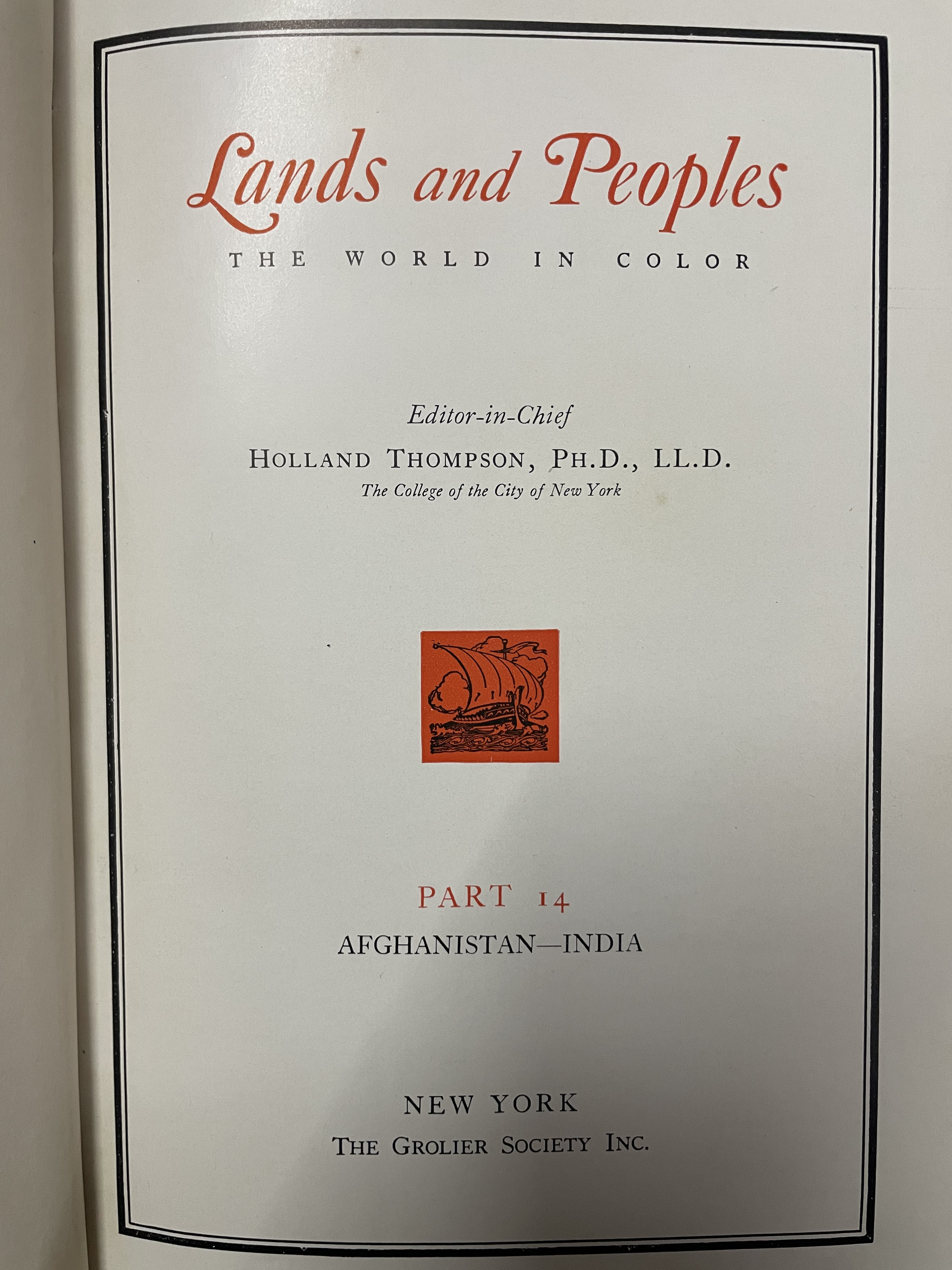Lands and Peoples World in Color

About
Summary
Exquisite
TOC
Details
Related
URL
Images
Overview
Lands and Peoples: The World in Color is a multi-volume series edited by Holland Thompson, originally published in 1929 by The Grolier Society. The series aims to present a vivid and engaging portrait of various countries and cultures around the world, using color illustrations and descriptive text. While individual volumes focus on specific regions or continents, the entire series seeks to provide readers with a comprehensive understanding of global diversity.Lands and Peoples: The World in Color is designed as a seven-volume set, though it appears there were other publications in the series as well. Each volume typically covers a specific geographical area, such as the British Isles and Western Europe. The books combine descriptive text with color photographs to offer a glimpse into the landscapes, people, customs, and cultures of different nations.
Holland Thompson served as an editor for the series. The series was initially published in 1929 by The Grolier Society. The books were designed to be visually appealing and informative, targeting a broad audience interested in learning about different parts of the world. Each volume contains numerous photographs, showcasing the diverse landscapes, people, and cultural practices of the regions covered. The text provides historical, geographical, and cultural context, enhancing the reader's understanding of each region. The series also includes indexes, making it easier for readers to find specific information.
Importance of Book
Educational Resource: The series serves as an educational resource, providing readers with information about different countries, cultures, and people around the world.
Cultural Understanding: By showcasing the diversity of human societies, the series promotes cross-cultural understanding and appreciation.
Visual Appeal: The use of color illustrations makes the series visually appealing and engaging for readers of all ages.
Historical Record: As a publication from the early 20th century, the series offers a glimpse into the world as it was perceived at that time, providing valuable insights into historical attitudes and perspectives.
Key Themes
Cultural Diversity: The series emphasizes the diversity of human cultures, showcasing the unique customs, traditions, and ways of life found in different parts of the world.
Geographical Exploration: Each volume provides a geographical exploration of the regions covered, highlighting their landscapes, natural resources, and environmental features.
Historical Context: The series offers historical context, tracing the development of different societies and their interactions with one another.
Human Experience: By focusing on the lives and experiences of people in different parts of the world, the series promotes a sense of shared humanity.
Industrialization: The influence of the Industrial Revolution on society is also a theme, and how the transfer of people changes the state.
Cultural Significance
Lands and Peoples: The World in Color holds cultural significance as a reflection of early 20th-century attitudes toward globalization, cultural exchange, and the representation of different societies:
Popularization of Knowledge: The series contributed to the popularization of geographical and cultural knowledge, making it accessible to a broad audience.
Promotion of Internationalism: By showcasing the interconnectedness of different regions and cultures, the series promoted a sense of internationalism and global awareness.
Representation of the Other: The series offers insights into how different cultures were perceived and represented in the early 20th century, reflecting both the era's progressive ideals and its biases.
Effects on Society
Broadening Perspectives: By exposing readers to different cultures and ways of life, the series broadened their perspectives and challenged ethnocentric viewpoints.
Stimulating Interest in Travel: The visually appealing presentation of different destinations may have stimulated readers' interest in travel and exploration.
Shaping Perceptions: The series likely played a role in shaping popular perceptions of different countries and cultures, influencing how people understood the world around them.
Economic Effects: With industrialization and new markets for farm production and increased wages, rural communities were affected by a rise in telephone and mail service usage.
Conclusion
Lands and Peoples: The World in Color, edited by Holland Thompson, is a multi-volume series that offers a visually appealing and informative introduction to the diverse cultures and societies of the world. The series' cultural significance lies in its popularization of geographical knowledge, promotion of internationalism, and reflection of early 20th-century attitudes toward cultural exchange. Its effect on society has likely been to broaden perspectives, stimulate interest in travel, and shape perceptions of different countries and cultures. Holland Thompson’s work displays the shift in economic and social life of people at the time. The series provides a glimpse into how the world was viewed and understood in the early 20th century.
Title
Lands and Peoples World in Color
Author
Holland Thompson
Name of Publisher
The Grolier Society New York
Publish Date
1940
Subject
The world?s geography and cultures
Vintage
1901-1947
Category
Travel
Sub Category
Literary
Rarity
RARE
